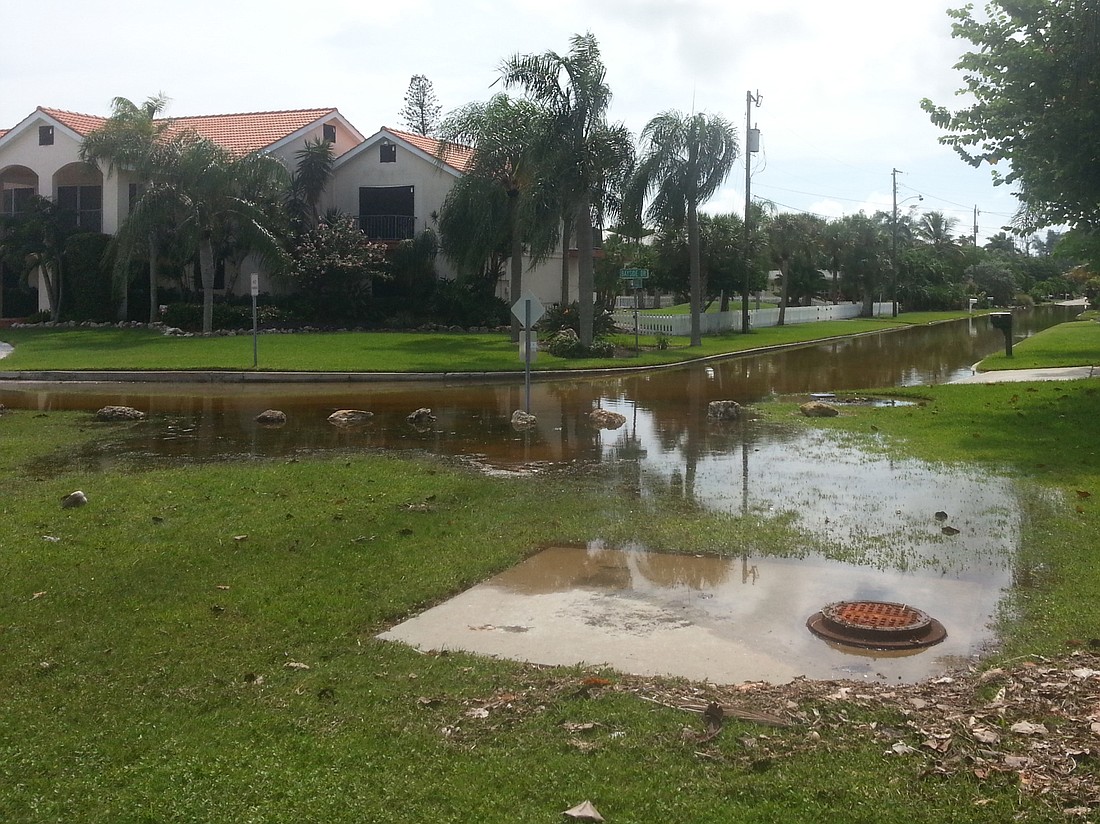- May 2, 2025
-
-
Loading

Loading

Harry Christensen said he tries to stay dry.
But as a resident of The Village on Longboat Key’s north end for 45 years, it’s not that easy. He and his neighbors sometimes have to park at the edge of their neighborhood just to keep their cars safe from gulf water that fills the streets at least a few times a year.
He said he’s seen children riding kayaks in the roads and a tiki mask floating on his deck. Big trucks sometimes drive through the water and cause a wake that can be damaging to homes.
“Flooding is part of living in the village area,” Christensen said. “It’s not something like, ‘Oh, my God, I’m living in the village, and now it’s flooding.’”
And this flooding can happen on days without rain. Unusually high gulf levels flood the low-lying streets with water through stormwater pipes, bubbling out of drains meant to divert rainwater into Sarasota Bay.
These higher-than-usual “spring tides” — which have nothing to do with the season — occur most often during a full or new moon.
This predictable phenomenon is worse in the winter, but it’s not anything new.
Vice Mayor Ed Zunz, who represents District 5, said this nuisance flooding has been happening ever since people inhabited the island.
The town has installed four duckbill valves in The Village, which look much like a duckbill turned on its side in the bay that allow water out but not back in, between 2002 and 2003.
These valves have a lifespan of about 25 years, said Public Works Project Manager James Linkogle.
But after a while the duckbill valves, technically known as Tideflex Check valves, collect barnacles and other debris that create gaps in the valve seal and allow water into the storm drains.
So the Public Works Department plans to add more valves to existing stormwater pipes in an effort to mitigate tidal flooding, Linkogle said.
The department is also investigating a new type of valve that’s been installed in communities around the state, including Anna Maria Island, Linkogle said.
Public Works installed one in November on General Harris Street to see how it works, Linkogle said.
It’s called the WaStop Inline Check Valve, a flexible, hollow cone-shaped barrier with its apex facing inward and upward.
When stormwater fills the pipe, the pressure lifts the bottom of the barrier allowing stormwater out.
When the tide rises above the valve, water fills the sealed hollow barrier, stopping it from flowing inward.
These WaStop valves, which are the latest and greatest in water stopping technology, according to the manufacturer, are comparable in price to the Tideflex flaps, Linkogle said.
The Public Works Department has money in its budget to install new valves this year, although it’s still investigating when and where to put them, Linkogle said. In most cases, Linkogle said, the Public Works Department could install the valves.
“These valves, just literally once you clean the end of the pipe out, you just slide them in and make the neoprene gasket seal, then fasten it down and make sure there’s a good seal there,” Linkogle said. “There’s a high level of confidence that we can install them.”